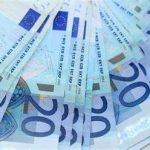Twenty Myths About Order Counterfeit Money: Busted

The Dangers of Counterfeit Money: Understanding the Risks and Consequences
In an increasingly cashless society, the use of physical currency might appear out-of-date to some, yet counterfeit money stays a relentless concern that impacts people, organizations, and economies worldwide. The sophistication of present counterfeiting methods has just grown, making it vital for customers and company owner to inform themselves about the risks, recognition methods, and legal consequences of counterfeit currency. This article explores the complexities of counterfeit money, describes the actions one can require to safeguard versus it, and responses often asked questions about this appropriate topic.
Comprehending Counterfeit Money
Counterfeit money refers to currency that has actually been produced illegally with the intent to deceive. Counterfeiters utilize numerous approaches to duplicate banknotes and coins, frequently using top quality printing technology and intricate designs that imitate real currency. While the primary motive behind producing counterfeit currency is financial gain, the implications extend beyond mere theft; they can destabilize economies, drawback sincere organizations, and lead to extreme legal repercussions for those included.
The Impact of Counterfeit Money
Financial Consequences: When counterfeiting becomes prevalent, it can cause inflation, a reduction in currency worth, and general distrust in the nation's financial system. This wonder about can result in consumers keeping their money or selecting alternative types of deals, which can even more harm the economy.
Effect on Businesses: Businesses, particularly little ones, are typically hit hardest by counterfeit currency. Accepting fake notes can result in substantial financial losses and even insolvency. Moreover, counterfeiting can harm a service's credibility; consumers may be less ready to trust brand names that come down with counterfeiting plans.
Legal Repercussions: Unwittingly accepting counterfeit money does not get rid of liability from people or companies. The law generally requires that those who possess counterfeit currency need to report it to authorities, as intentionally dealing in fake money can lead to criminal charges.
How to Recognize Counterfeit Money
Recognizing counterfeit money is essential for protecting oneself from monetary loss. Here are some reliable ways to recognize fake currency:

Check the Print Quality: Genuine currency has a particular texture, color, and print quality that can be difficult to reproduce. Examine banknotes for smudging or blurring, which might suggest counterfeiting.
Try to find Watermarks: Most contemporary banknotes consist of watermarks that are challenging to duplicate. Hold the bill approximately the light to see if the watermark exists and clear.
Examine the Security Thread: Real banknotes have embedded security threads, normally visible when held up to the light. Counterfeit costs might do not have these functions, or they might be improperly reproduced.
Utilize a UV Light: Many currencies have aspects that fluoresce under ultraviolet light. Examining these features can assist in identifying the credibility of a banknote.
Feel the Texture: Authentic currency is printed on a specific kind of paper that feels various from routine paper. Rubbing your fingers over the bill can help you recognize its authenticity.
Tips to Protect Against Counterfeit Currency
To reduce the risk of coming down with counterfeit money, individuals and companies can execute the following measures:
Inform Employees: Regular training sessions on how to detect counterfeit money can be beneficial for workers, particularly those in retail settings.
Use Detection Tools: Invest in counterfeit detection gadgets such as UV lights, pen testers, or digital note validators that can precisely check currency credibility.
Maintain a Close Eye on Transactions: Encourage watchful monitoring of money transactions and screens for prospective counterfeit notes.
100% echtes falschgeld of Counterfeit Money
Participating in the production, circulation, or use of counterfeit currency protests the law in essentially every country. Legal effects can include substantial fines and imprisonment. Government agencies, such as the U.S. Secret Service, actively investigate counterfeit money operations, and individuals discovered guilty of involvement in counterfeiting may deal with serious penalties.
Often Asked Questions (FAQs).
1. Is it prohibited to unconsciously accept counterfeit money?
Yes, while it may not be a criminal charge to accept counterfeit currency unintentionally, there is a responsibility to report the counterfeit to authorities. Failure to do so can result in civil liabilities.
2. What should I do if I receive counterfeit money?
If you think you have actually received counterfeit money, do not try to spend it. Instead, report the occurrence to regional law enforcement or your country's financial authority. Furthermore, document the information of the transaction and where you got the currency.
3. Are there specific currencies that are more typically counterfeited?
Yes. The U.S. dollar is the most commonly counterfeited currency worldwide, but other currencies like the euro, British pound, and Indian rupee have likewise been counterfeited extensively.
4. How can I guarantee my company isn't accepting counterfeit money?
Train your workers on recognizing counterfeit notes, invest in detection technology, and execute rigorous cash-handling practices.
5. What can I do to spread out awareness about counterfeiting?
Sharing info through workshops, neighborhood boards, or social networks platforms can educate others about the risks and prevention approaches associated with counterfeit currency.
Conclusion.
Counterfeit currency postures significant threats not just to specific consumers but also to businesses and the economy as a whole. Understanding how to determine fake currency, recognizing the further ramifications of counterfeiting, and taking proactive steps can minimize dangers. Awareness and watchfulness can make a significant difference as we continue to browse a world where counterfeit money remains a danger to financial integrity. By equipping themselves with knowledge and tools to fight counterfeiting, individuals and services can safeguard themselves and add to a more protected economic environment.
